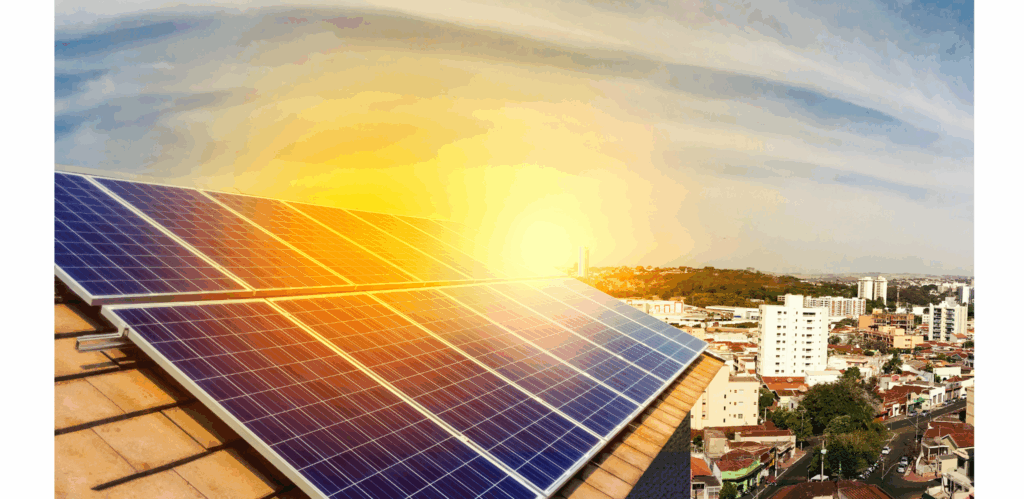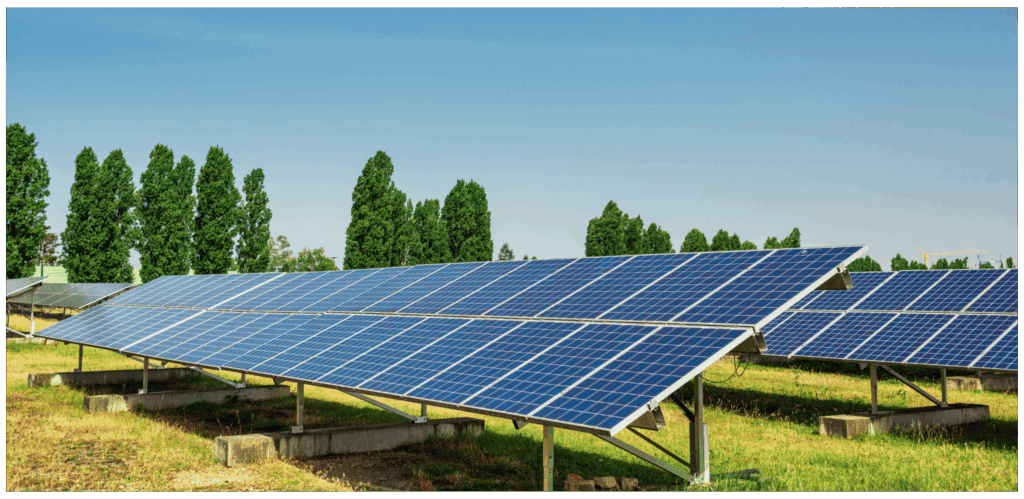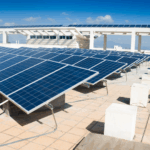On July 4th, 2025, H.R. 1, also known as the “One Big Beautiful Bill”, was signed into law. This bill makes drastic changes to the clean energy incentive landscape. Between H.R. 1’s passing and an additional executive order signed on July 7th, the restrictions placed on the solar tax credit are vast and will cause a near-future rush to install equipment.
In previous articles, we discussed the House and Senate’s proposed changes and what they could mean for the solar industry. Below, we’ll break down the final versions of the bill amendments concerning solar tax credits and regulations, as well as their potential impact on the industry.
You can read the full version of H.R.1 here.
Table of Contents
Section 25D – Solar Tax Credit for Owned System

- Credit ends at the end of 2025
The solar tax credit is divided into several sections, depending on the entity claiming the credit. Section 25D is the version of the credit claimed by individuals who purchase their solar systems via cash or loan.
H.R. 1 amended the tax credit to expire for expenditures made after December 31st, 2025. The Inflation Reduction Act extended this credit to be available at 30% until 2032, when a phase-out would occur, with values dropping until 2034. The solar energy tax credit dates back to 1978, but the version we know and use today was introduced in 2005 and has been extended multiple times due to its positive impact on a rapidly growing industry.
With this change, the credit abruptly ends at the end of 2025 with no phase-down, meaning homeowners trying to go solar in 2026 and beyond won’t receive any credit..
As of the time of writing, there don’t seem to be any changes to the credit rollover rule, though. So if you are a homeowner installing solar in 2025 and you can’t claim all the credit on your income taxes, you should still be able to utilize unused credit in future taxable years. Be sure to consult a tax professional when filing.
An interesting note with the amendment is the language “with expenditures made after December 31st”. Some have postulated that the change in language here could mean that homeowners could take the credit if they simply paid for the system before the end of 2025. This is clarified in 26 USC 25D(8)(A):
“Except as provided in subparagraph (B), an expenditure with respect to an item shall be treated as made when the original installation of the item is completed.“
Unfortunately for homeowners, this means that the system does need to be fully installed by the end of 2025 in order to still claim the credit.
When it comes to battery storage, the same guidance applies. For owned battery storage systems (those paid for through cash or financed), homeowners would claim the section 25D tax credit. Like solar installations, owned battery storage projects will no longer qualify for tax credits starting in 2026. Leased batteries, like leased solar, that utilize section 48E would still qualify for credits, but that credit is taken by the company rather than the homeowner.
Section 48E – Solar Tax Credit for Commercial and TPO

- Tax credit ends at the end of 2027, with exceptions for projects beginning construction by July 4th, 2026.
Solar Leases and Power Purchase Agreements (PPAs) are still able to claim the solar tax credit in the final version of the bill. The bill does put restrictions on the credit that we’ll explain further below, but for now, there is a small runway for third-party-owned solar.
The new version of the credit states that solar projects can qualify for the 48E tax credit if they are placed in service by December 31st, 2027. Starting in 2028, solar leases and solar PPAs will not be able to qualify for the federal solar tax credit.
One exception to the rule is any project that would begin construction by July 4th, 2026 – one year from the bill’s enactment. Any project that begins construction by that date can still be eligible for the solar tax credit as long as the system is placed in service within four years, meaning by 2030. This provision applies to commercial and utility-scale solar, as they can take significantly longer to permit and install.
The “placed in service” deadline does not apply to energy storage projects in the changes to 48E, so this leaves great avenues for Virtual Power Plant Projects (VPP) or storage as a part of new solar or wind projects. Effectively, the bill allows credits to be applied for renewable energy projects capable of providing baseload power.
H.R. 1 continues current IRS rules stating that a company may claim the tax credit for a given taxable year if either 5% of the total cost has been paid or “physical work of a significant nature” has been started.
While on the surface this may be a win for TPO products, the President issued an executive order on July 7th titled “Ending Market Distorting Subsidies for Unreliable, Foreign Controlled Energy Sources,” which directs the Secretary of the Treasury to:
“Within 45 days following enactment of the One Big Beautiful Bill Act, the Secretary of the Treasury shall take all action as the Secretary of the Treasury deems necessary and appropriate to strictly enforce the termination of the clean electricity production and investment tax credits under sections 45Y and 48E of the Internal Revenue Code for wind and solar facilities.
This includes issuing new and revised guidance as the Secretary of the Treasury deems appropriate and consistent with applicable law to ensure that policies concerning the “beginning of construction” are not circumvented, including by preventing the artificial acceleration or manipulation of eligibility and by restricting the use of broad safe harbors unless a substantial portion of a subject facility has been built.”
This order gives the Secretary of the Treasury a broad directive to end the solar tax credit and enforce the guidelines outlined in the big beautiful bill. At the time of this writing, no such guidance has been issued, but it could mean changes coming to the definition of “physical work of a significant nature” or even how much will have to be paid to claim the credit.
Foreign Entity of Concern (FEOC) Restrictions
- 40% of the value of all manufactured products must come from manufacturers that are not FEOC, increasing to 60%
Another major restriction on the 48E solar tax credit eligibility is the number of components in a system that come from a prohibited foreign entity, also called a Foreign Entity of Concern (FEOC). A FEOC is an entity, like a company, that is controlled or influenced in some fashion by a foreign government, called a “covered nation”. Currently, the list of covered nations includes:
- China
- Russia
- Iran
- North Korea
The US government determines if a company is subject to FEOC based on criteria related to the entity’s connection to one of those covered nations. Those criteria include:
- If the company is incorporated in, headquartered in, manufacturers in, or performs relevant activities in a covered nation
- If a company has at least 25% of the voting rights, board seats, or equity interests held by the government of a covered nation, including government officials
- If the Secretary of Energy and other relevant agencies determine that the company engages in conduct that harms US national security
FEOC restrictions look at the entire supply chain of a manufacturer to ensure that critical components of equipment cannot be produced in one of the covered nations. The Department of Energy’s website even lists an example of a US subsidiary, where they say even a wholly-owned US subsidiary producing goods in the United States could be considered FEOC if its parent company met the above guidelines.
FEOC restrictions will have a significant impact on manufacturing, as many prominent manufacturers produce in China or source material from a covered nation. Because of the “relevant activities” clause, we could see FEOC restrictions applying to companies that do R&D or have patents tied to covered nations.
The Big Beautiful Bill states that for projects beginning construction in 2026, at least 40% of the value of all the pieces of the solar system must come from non-FEOC companies for the project to be eligible for the 48E tax credit or 45Y production tax credit. That percentage increases by 5% every year until topping out at 60% for projects beginning construction in 2030.
For storage projects, 55% of the value must be non-FEOC for projects beginning construction in 2026, increasing to 75% for projects starting in 2030.
What Does All This Mean for Solar?
The overarching effect of losing the solar tax credit will be that it will make solar energy less affordable for homeowners to purchase. We may see more companies turning to TPO products, but especially in recent months/years, some large TPO providers have been experiencing financial trouble.
FEOC restrictions on components will prompt many residential and commercial installers to rush to secure equipment from manufacturers not subject to FEOC, particularly those based in the US. Many companies have begun opening US manufacturing plants, but a sudden rush of demand may mean that the solar equipment supply sees some headwind.
For the solar industry as a whole, the industry will take a dip in overall volume and year-over-year growth, but won’t go away by any means. Solar as an investment will still make sense because it is lower cost and easier to deploy than traditional forms of energy. Battery storage will continue to grow as severe weather concerns and grid instability continue to plague homeowners.
From an owned solar perspective, losing the tax credit would push the payback on an average solar panel system back by 3-5 years, still well within an acceptable investment range for a homeowner. As energy costs increase more dramatically, solar only becomes more effective.
Solar installers can weather coming changes by leaning more heavily into the value solar offers as an investment and by diversifying their business and product offerings. Companies that already install batteries, EV charging, roofing, HVAC, and other home improvements will be less subject to solar market fluctuations. Solar financing will also likely see a shift toward more local options like banks and credit unions.
Solar isn’t going anywhere, and homeowners can still benefit from solar. Solar Insure is here to help solar providers add value to their offerings. Reach out to us to learn more about what Solar Insure can offer your homeowners.



